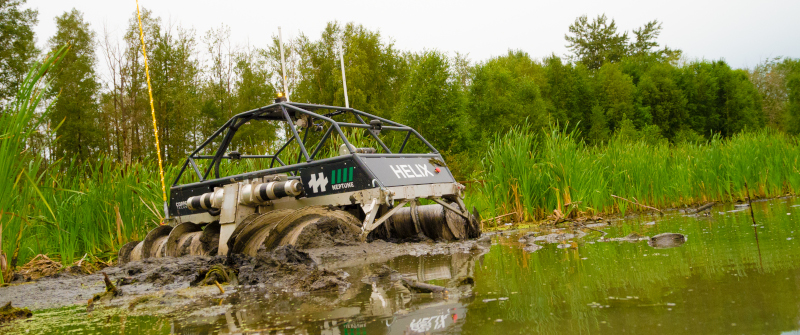
Design Engineering: Tailings Rover
by Mike McLeod

Copperstone Technologies’ amphibious Helix robot mitigates the risks of monitoring tailings ponds.

For the oil sands and mineral extraction industries, tailings ponds are an environmental and regulatory nightmare. Often massive structures, they are designed to “temporarily” contain extraction by-products – often a mixture of water, sand and clay, as well as residual bitumen and other hazardous chemicals–until the solids in the slurry settle out over time.
While most of the clarified water at the top of the pond is re-used, what remains is a toxic sludge, called fine fluid tailings (FFT), that can take years to decades to dry out sufficiently for the pond to be reclaimed. During that “dewatering” process, environmental regulations require that tailings ponds and dams be regularly monitored.
For the Alberta oil sands, the burden is only growing. According to a 2021 report by the Alberta Energy Regulator (AER), tailings ponds currently contain 1.36 billion cubic meters of fluids that cover a surface 1.7 times the size of Vancouver. Taking regular depth readings, core samples and other measurements over that vast an area is a lengthy and difficult process.
This article originally featured in Design Engineering. Read the full version here.